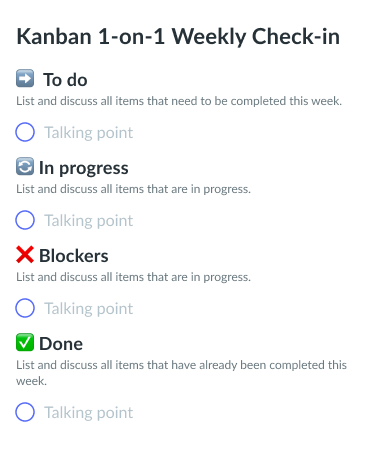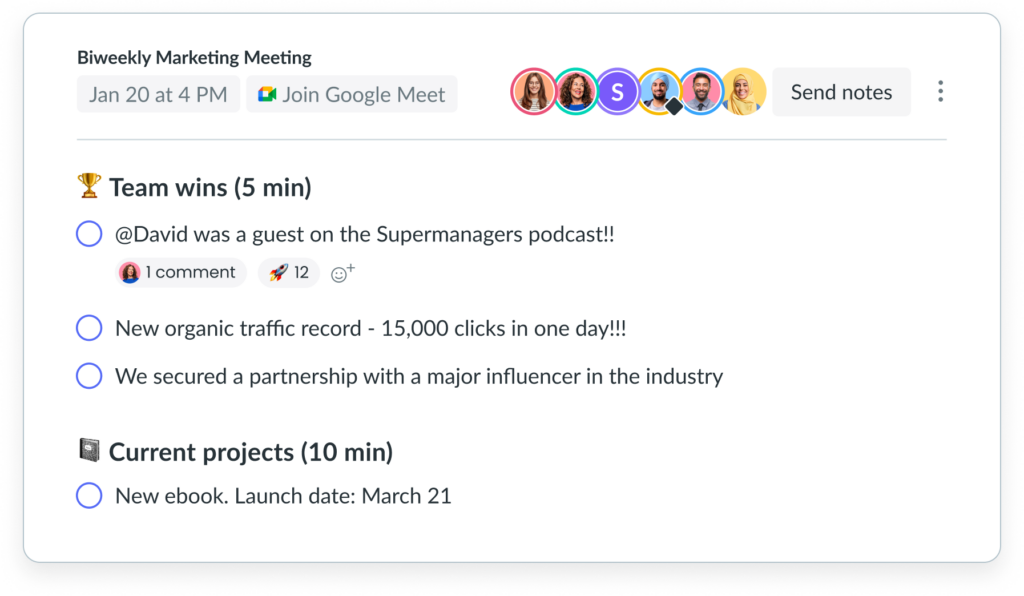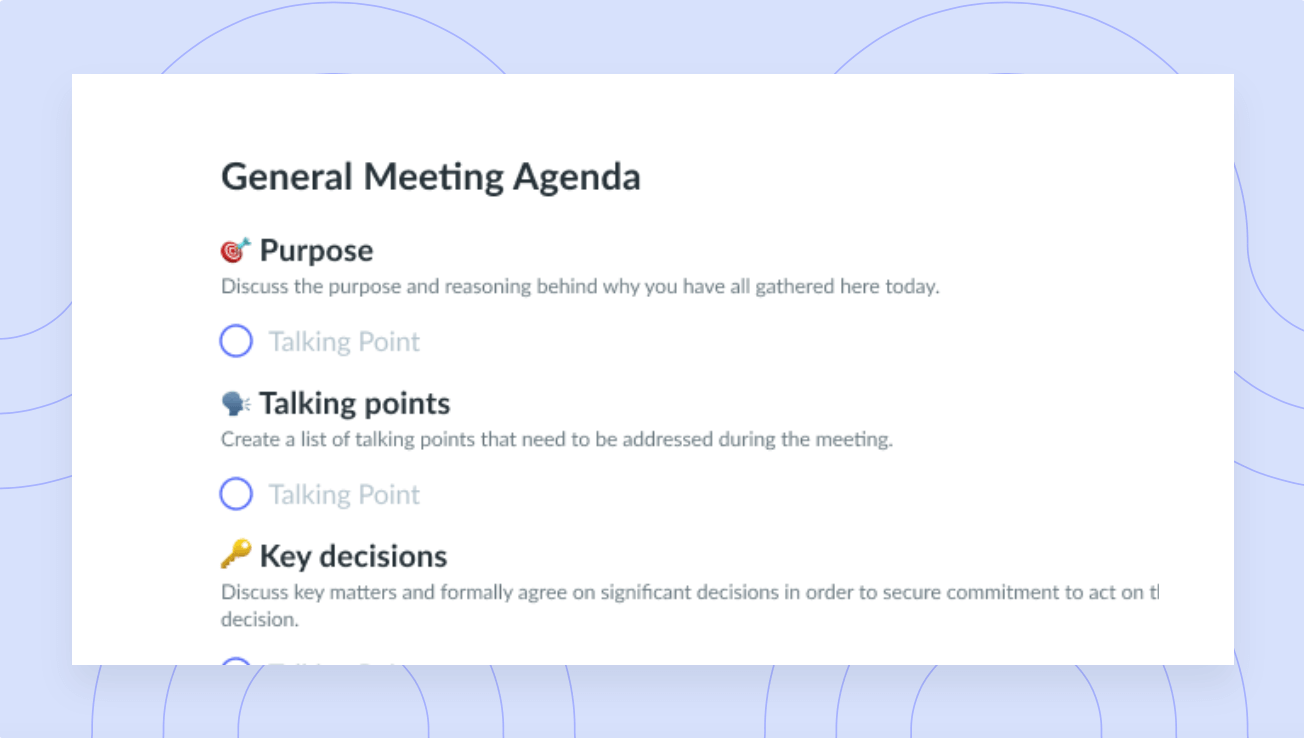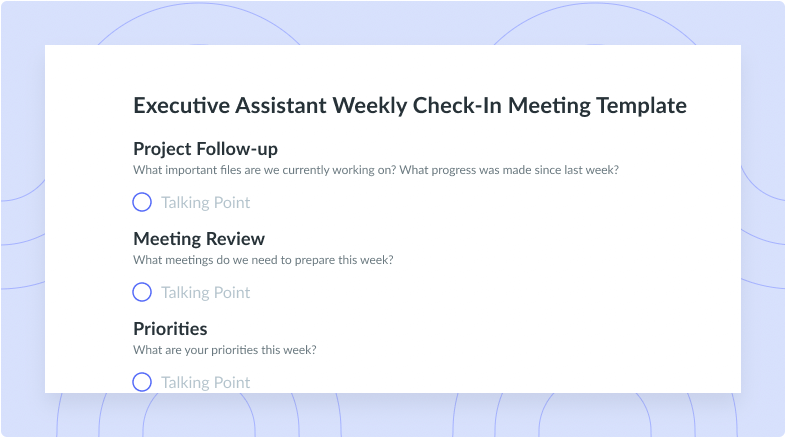How to Effectively Manage Teams Remotely: 8 Tips
Combat time zones, fight off misinformation, and foster collaboration by learning how to effectively manage teams remotely.
Managing teams remotely can be incredibly challenging, especially if you don’t have any prior experience. Whether you’ve adjusted or not, remote work is here to stay. To help you adjust to this new normal, we’ve put together eight tips you can leverage to successfully manage remote teams.
Challenges of managing teams remotely
1Burnout
While remote work offers a great deal of freedom and flexibility, it can also be demanding and overwhelming. There are several factors that increase the likelihood of burnout among remote employees, including a lack of clear boundaries, constant accessibility, isolation and loneliness, communication challenges, an increased workload, a lack of recognition, high autonomy and responsibility, and limited separation between work and home. To mitigate the risk of burnout among remote employees, managers should prioritize well-being, promote work-life balance, and establish clear boundaries for work hours.
2Lack of trust
One of the major challenges of managing remote teams is a lack of trust in both manager-employee relationships and peer-to-peer relationships. In remote work environments, employees don’t often meet face to face. Without regular in-person or face-to-face interactions, it becomes difficult to establish personal connections and even harder to build trust. In an attempt to ensure remote employees are working, some managers may overstep and begin to micromanage their employees. Not only does this lead to decreased productivity, but it can also create a sense of distrust as employees feel like their autonomy and expertise are being taken for granted.
3Communication
Communication can be a major challenge when managing remote teams, largely because managers and employees alike have been trained and conditioned to work in in-person environments. If proper systems and processes aren’t in place, communication may fall through the cracks, resulting in misinformed employees, poor collaboration, missed deadlines, and decreased productivity. Finding the right balance between keeping your teammates informed and respecting their boundaries is the key to successful communication in a remote work environment. It’s important to refrain from bombarding your direct reports with messages or meeting invites but it’s equally important to ensure they have the information they need to go about their days.

Run effective, engaged remote meetings from anywhere
Keep your virtual meetings on track with Fellow’s collaborative agendas, real-time notetaking, and feedback. Try a tool like Fellow today!

4Loneliness
One of the largest challenges when managing remote teams is dealing with employee isolation. While there are many undeniable benefits of remote work, isolation and loneliness can be detrimental to the success of your team. To mitigate the risks of loneliness and isolation among your remote team, you must prioritize the health and well-being of your team. This can be done by hosting virtual meetings and casual hangouts, fostering personal connections, ensuring your employees feel heard and valued, and maintaining an open line of communication.
5Unclear expectations
When managing a remote team, it’s important to prioritize having well-defined expectations and maintaining clear communication about roles, responsibilities, and shared goals. Failing to effectively communicate these aspects may result in misalignment, poor performance, confusion, stress and anxiety, a lack of accountability, low morale, decreased trust, missed opportunities, and employee turnover. To mitigate the effects of unclear expectations among remote teams, it’s crucial to foster a culture that prioritizes open and honest communication. This involves setting clear goals and benchmarks, clearly defining roles and responsibilities, and creating a feedback loop.
8 tips for managing teams remotely
- Host daily check-ins
- Leverage technology
- Provide continuous feedback
- Improve your onboarding process
- Over-communicate
- Run team-building activities
- Foster collaboration
- Provide multiple communication channels
1Host daily check-ins
Hosting daily check-ins provide managers with an excellent opportunity to sustain connections, foster alignment and clarity, and take a proactive stance to problem solving. Not only will prioritizing check-ins let your teammates know that you’re there to support them, but it will also allow you to gain an in-depth understanding of their progress as well as any roadblocks or hurdles they may be facing. This time can be used to connect, boost morale, solve problems, give praise, or provide feedback.
Fellow makes it easy for managers like yourself—as well as your direct reports—to collaborate on talking points, exchange feedback, and host engaging conversations, so you can always make the most of your daily check-ins. With Fellow, hosting effective check-ins is as simple as selecting a pre-built template, customizing it to cater to your needs, and bringing it to life in real time during your next meeting!

2Leverage technology
Because remote teams rely heavily on technology to connect, communicate, and collaborate, choosing the perfect suite of tools is essential. Leveraging the proper tools will empower your team to overcome remote work challenges by helping you facilitate effective communication and collaboration with features that enable video conferencing, virtual meetings, document sharing and storage, task management, and performance tracking.
Fellow is an excellent tool that can be used to help you manage remote teams with unique features that foster collaboration and accountability before, during, and after every meeting. With Fellow, you can connect remote teams and keep your virtual meetings on track with collaborative meeting agendas.

3Provide continuous feedback
Providing continuous feedback will equip your remote team with the insights and knowledge necessary to navigate the unique challenges of remote work. To provide continuous feedback, you must create a culture that supports constructive feedback while scheduling regular feedback meetings that provide kind, valuable, and respectful insights.
Fellow makes the process of giving and receiving feedback simple and effective with its feedback feature. With the feedback feature, you can seamlessly incorporate feedback into your team’s day-to-day experience and track progress over time. Pre-built templates help you create a feedback request without overthinking the process, and your teammates can respond on the web or directly through Slack so everyone on your team can begin to implement positive change immediately.

4Improve your onboarding process
Improving your onboarding process when managing a remote team is crucial for many reasons including maintaining seamless transitions, clarifying expectations, setting performance expectations, building positive relationships, mitigating turnover, and providing incoming teammates with the opportunity to adapt to a remote work environment. The onboarding process provides you as the manager with the opportunity to set the tone for the employee’s entire stay at the company. Providing a positive experience will ensure incoming team members can adapt more easily, contribute effectively, and feel connected to their peers and the organization’s mission right from the start.
5Over-communicate
Over-communicating—whether it be for project instructions or during daily check-ins—helps prevent misunderstandings, keeps key information top of mind, and makes sure everyone on your team is on the same page. If your remote teammates don’t have to second guess themselves or actively source information that should have already been readily available, they’ll be more inclined to work efficiently.
Fellow is the top-rated meeting management software that helps organizations run more efficient meetings by streamlining communication to get work done faster. If you’ve been actively looking for a tool to help you prioritize communication asynchronously, Fellow is for you. With Fellow, you can empower your team to build great meeting habits through collaborative meeting agendas, time-saving templates, multi-assignee action items, and so much more.
6Run team-building activities
Isolation and feelings of loneliness are prominent among remote teams, largely because remote employees don’t have the opportunity to get to know their peers beyond work. Facilitating social interactions—like team-building activities—that encourage your teammates to mingle and get to know one another is an excellent way to eradicate these feelings while creating a more positive work environment. Social interactions like remote team-building activities will help your employees build trust and, ultimately, lasting working relationships. Examples of remote team-building activities include virtual coffee breaks, virtual escape rooms, online workshops, remote team challenges, online cooking or mixology classes, remote book or movie clubs, or online trivia nights.
7Foster collaboration
When managing a remote team, it’s important to encourage collaboration. Remote employees have a habit of working independently, so they may need a push from time to time to collaborate. Encouraging collaboration among your remote team while reiterating the importance of teamwork will help foster collaboration while reminding your teammates there is power in numbers. Greater collaboration can lead to better quality control, improved efficiency, higher team morale, and bigger, bolder ideas!
Fellow empowers users to manage remote teams with ease. Built with a range of features that streamline communication, collaboration, and feedback, Fellow is the perfect tool for anyone who is looking to up their management game. In addition to collaborative meeting agendas, time-saving templates, and multi-assignee action items, Fellow’s Chrome Extension allows you to access your meeting notes right inside of Google Meet calls and your Google Calendar so you can prioritize collaboration without leaving your everyday tools.

8Provide multiple communication channels
It’s no secret that everybody has different communication preferences. Some employees may prefer to communicate synchronously by video conferencing software or phone calls, and other employees may prefer to communicate asynchronously by Slack or email. Providing multiple communication styles ensures that everyone can communicate how they communicate best, avoiding aversions and helping to break down communication barriers.
Are you ready to level up your remote management skills?
Managing teams remotely can be incredibly difficult if you don’t have the right tools at your disposal. Considering these tips will ensure you have the resources and knowledge necessary to thrive while managing teams remotely. Don’t forget to check out the Fellow blog for more best practices and expert advice!




























